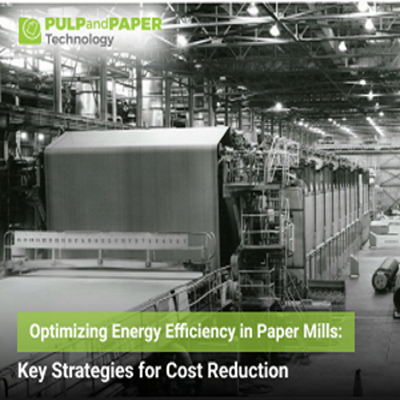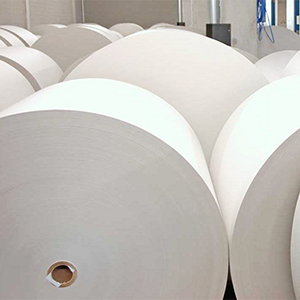Optimizing Energy Efficiency in Paper Mills: Key Strategies for Cost Reduction

Introduction:
In our daily lives, paper mills are indispensable, producing the materials essential for numerous vital products. Nevertheless, these mills consume significant amounts of energy, greatly impacting their operational expenses. In an age where environmental consciousness and cost-effective business approaches are paramount, it is vital for paper mills to embrace energy-efficient tactics. By implementing practical measures, these mills can not only diminish their ecological impact but also reduce operational costs. This article delves into a range of strategies that can be adopted to amplify energy efficiency within paper mills, resulting in considerable savings and a more sustainable trajectory.
Understanding Energy Consumption in Paper Mills:
Before delving into the strategies for optimizing energy efficiency, it's crucial to understand the primary areas of energy consumption within a paper mill. Generally, energy usage in a paper mill can be categorized into three major segments: raw material preparation, pulp processing, and paper production. Each phase requires a significant amount of energy, making it essential to identify potential areas for improvement and energy savings throughout the entire production process.
Strategies for Reducing Energy Consumption:
1. Conducting Energy Audits: One of the initial steps in optimizing energy efficiency is conducting comprehensive energy audits. These audits help in identifying areas with high energy consumption and potential energy losses. By analyzing the data gathered through these audits, managers can pinpoint specific processes or equipment that consume excessive energy and prioritize them for optimization.
2. Implementing Efficient Equipment: Upgrading to energy-efficient machinery and equipment can significantly reduce energy consumption. Advanced technologies, such as high-pressure boilers, energy-efficient motors, and automated control systems, can help streamline operations while minimizing energy usage. Additionally, investing in state-of-the-art heat recovery systems can harness and reuse waste heat, thereby enhancing overall energy efficiency.
3. Process Streamlining: Enhancing the efficiency of the paper manufacturing process can yield significant energy savings. This involves identifying and removing obstacles, minimizing unnecessary downtime, and optimizing the movement of raw materials. Additionally, aligning production schedules with energy demand patterns can effectively balance energy consumption and decrease operational expenses.
4. Waste Minimization and Recycling: Integrating waste minimization practices and establishing robust recycling programs can significantly contribute to energy savings. By reusing and recycling materials like paper waste, water, and chemicals, paper mills can reduce the overall energy required for raw material processing and production, thereby cutting operational costs and promoting sustainability.
5. Energy Management Systems: Adopting advanced energy management systems can provide real-time insights into energy consumption patterns, enabling better control and monitoring of energy usage. These systems can help in identifying anomalies, optimizing energy distribution, and implementing timely adjustments to reduce energy wastage.
6. Staff Education and Awareness: Providing education and training to employees about the significance of energy efficiency and the adoption of energy-saving techniques can cultivate a sustainability-focused culture within the company. By motivating employees to engage in energy conservation initiatives, paper mills can successfully diminish energy consumption and foster a more environmentally conscious workplace.
7. Renewable Energy Integration: Integrating renewable energy sources, such as solar, wind, or biomass energy, into the production process can significantly reduce dependency on traditional energy sources. Implementing renewable energy technologies can not only help in cutting operational costs but also promote environmental sustainability by reducing carbon emissions.
Benefits of Energy Efficiency in Paper Mills:
Incorporating energy-efficient strategies in paper mills can result in various advantages, such as:
1. Financial Savings: By decreasing energy usage, paper mills can substantially reduce operational expenses, leading to enhanced profitability and increased competitiveness in the market.
2. Environmental Impact: Enhanced energy efficiency not only reduces the carbon footprint but also contributes to a more sustainable and environmentally friendly production process.
3. Regulatory Compliance: Adhering to energy efficiency standards and regulations can help paper mills avoid penalties and legal repercussions while fostering a positive corporate image.
4. Enhanced Operational Performance: Optimizing energy efficiency can lead to smoother production processes, improved equipment reliability, and overall operational excellence, thus enhancing the overall productivity of the paper mill.
Conclusion:
In addition to the outlined strategies, it is crucial for paper mills to stay updated with the latest technological advancements and industry best practices. Regularly monitoring and evaluating energy efficiency initiatives can help identify areas for further improvement and innovation. Collaborating with energy consultants and industry experts can provide valuable insights and guidance for implementing cutting-edge technologies and sustainable practices.
Furthermore, fostering a culture of continuous improvement and innovation within the organization is essential. Encouraging research and development activities focused on energy-efficient processes can lead to the discovery of novel techniques and technologies for further reducing energy consumption and operational costs.
It is also vital for paper mills to actively engage with stakeholders, including local communities, regulatory bodies, and environmental organizations. By fostering transparent communication and collaboration, paper mills can build trust and credibility within the community while demonstrating their commitment to sustainable and responsible business practices.
Moreover, participating in industry-wide initiatives and certifications related to energy efficiency and environmental sustainability can help paper mills showcase their dedication to corporate social responsibility. Certifications such as ISO 50001 for energy management systems and Forest Stewardship Council (FSC) certification for responsible forestry practices can not only enhance the credibility of the paper mill but also open up new market opportunities and partnerships with eco-conscious businesses.
In conclusion, energy efficiency in paper mills is not only about reducing operational costs but also about embracing a sustainable approach to production. By implementing a combination of energy-efficient technologies, process optimizations, and employee engagement, paper mills can effectively reduce their energy consumption, lower their carbon footprint, and contribute to a more environmentally conscious future. Embracing energy efficiency is not just a business decision; it is a commitment to building a better, more sustainable world for future generations.









